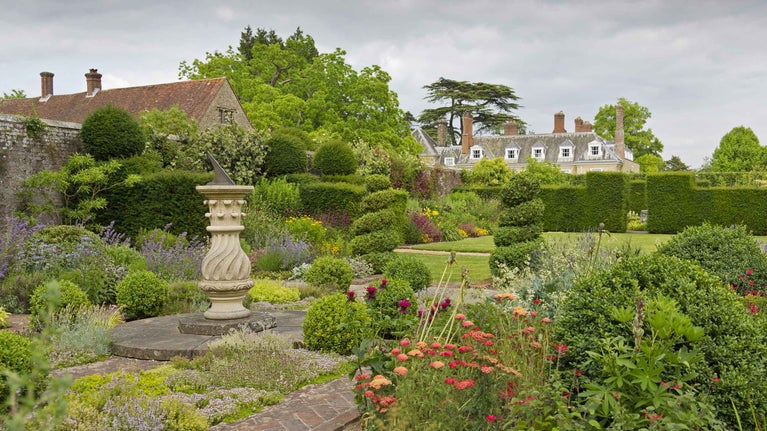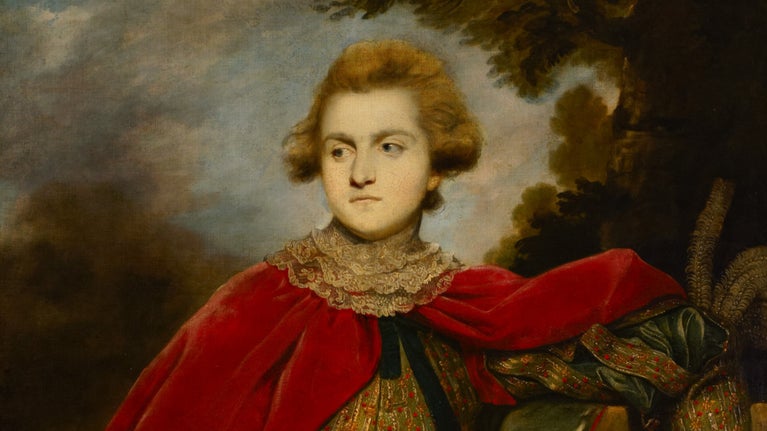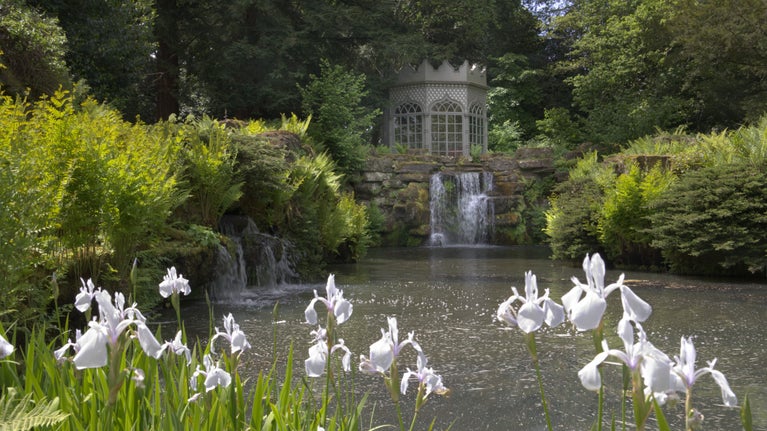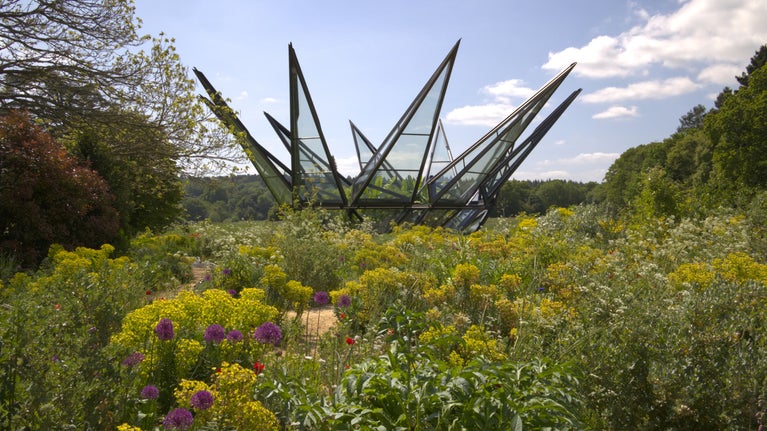History of Woolbeding Gardens

Jump to
Woolbeding Gardens are set in the 'the greenest valley with the prettiest river in the world’. A place with Anglo-Saxon origins, Woolbeding manor was transformed into an Elizabethan house and then a Georgian country home. Over the past 50 years, the gardens have developed into a horticultural haven thanks to Simon Sainsbury and his life partner Stewart Grimshaw.
Early history
Woolbeding, meaning Wulfbeard’s people, is recorded in Domesday Book of 1086 as having woodland, ploughing land, meadows, a mill and church, and 24 households. These comprised of 14 villagers, 5 smallholders and five enslaved Anglo-Saxon people.
The estate had many owners over the next 500 years including members of the de Wolbedinge family and the Earls of Arundel. Elements of an earlier Elizabethan manor, built by William Ayling (about 1520–83), remain in the house today.
Georgian times
The Mill family, who also owned Mottisfont in Hampshire, built the current house in the mid-18th century. From 1785 they rented the house to the poet and novelist Charlotte Smith (1749–1806) and her husband Benjamin Smith who was a merchant and Caribbean plantation owner, and their family. Their marriage was an unhappy one and at times violent. It was from Woolbeding in 1787 that Charlotte left her husband, moved to Chichester and began writing novels such as Emmeline and The Old Manor House.
After the Smiths left, Woolbeding was home to Lord Robert Spencer (1747–1831), son of the 3rd Duke of Marlborough, who hosted many parties at the house for prominent politicians. When visiting the house, Prime Minister Benjamin Disraeli (1804–81) described the valley of the Little Rother at Woolbeding as 'the greenest valley with the prettiest river in the world’.

20th-century
In 1893 Henry Arthur Lascelles (1842–1913), the grandson of the 2nd Earl of Harewood, inherited the Woolbeding estate. The Lascelles family wealth came from the trade in enslaved people and sugar, and this history is actively being researched by the current Earl of Harewood.
Woolbeding passed to Henry Arthur’s son Edward Charles Ponsonby Lascelles and on his death in 1956 the National Trust obtained the whole Woolbeding estate from the Lascelles family as part of the offsetting of death duties. The family continued to live in the house until 1969. It was vacant for 18 months, after which, along with the gardens, it was leased to Simon Sainsbury and Stewart Grimshaw.
Simon Sainsbury and Stewart Grimshaw
Simon Sainsbury (1930–2006) was a financial director of his family business, the grocery retailer J. Sainsbury’s. He was an art collector and philanthropist who, with his life partner Stewart Grimshaw, founded the Monument Trust which distributed £100 million to charities (including the National Trust) during his lifetime. Woolbeding was their home together for 35 years and, since Simon’s death, Stewart continues to live in the house. Simon bequeathed much of the garden sculpture to the National Trust, and left his art collection to the National Gallery and Tate – one of the most important gifts in the history of both museums.

Transforming the gardens
In 1973, Simon and Stewart appointed American garden designer Lanning Roper (1912–83), who went on to become King Charles’s designer for the gardens at Highgrove House in Gloucestershire, to make sweeping changes. This included the construction of formal garden rooms. As Stewart recalled, ‘We divided the garden into rectangular blocks, comprising an orangery enclosing a swimming pool, a herb garden (structured by box hedges and spiral topiaries), picking borders, a fruit cage and the best room devoted to the real treasure of Woolbeding: a fountain topped by a youth astride dolphins.’ This fountain is a replica of the original 16th-century fountain on loan to the Victoria and Albert Museum. They also employed the designer Philipp Jebb (1927–95) whose work at Woolbeding includes the Tulip Folly and Summerhouse.
Since the early 2000s, garden designers Julian and Isabel Bannerman (who also designed the Collector Earl’s Garden at Arundel Castle) have developed the Pleasure Garden, Long Walk and Entrance Garden areas. They extended the lake to introduce a waterfall constructed from Sussex sandstone and built a variety of follies, taking advantage of the Sussex views. On 7 April 2011 Stewart and the National Trust opened the gardens to regular summer visitors.
Contemporary art and design
Stewart and the Woolbeding gardens team have added striking features to the gardens including William Pye’s large stainless-steel sculpture ‘Cedra’ (2011) positioned on the site of a lost cedar tree. In 2021 a monumental new glasshouse, designed by the architect Thomas Heatherwick, was opened to visitors. It is set within a garden featuring plants found on the Silk Route, an ancient network of trade routes between Europe and Asia.

Further reading
- Grimshaw, Stewart, ed. 'The Loveliest Valley: A Garden in Sussex', 2011.
- Salmon, Bridget. 'Sainsbury, Simon David Davan (1930–2006), businessman and philanthropist.' Oxford Dictionary of National Biography, 7 Jan. 2010.
- L. Namier, J. Brooke, ed. 'Spencer, Lord Robert (1747-1831)', The History of Parliament: the House of Commons 1754-1790, 1964.
- Zimmerman, Sarah M. 'Smith [née Turner], Charlotte (1749–1806), poet and novelist.' Oxford Dictionary of National Biography, 23 Sep. 2004.
- The Foundation of Harewood – Harewood House, accessed 27 January 2025.
- The Woolbeding Charity – The Sainsbury Family Charitable Trusts (sfct.org.uk), accessed 27 January 2025.
You might also be interested in
The Woolbeding Glasshouse and Silk Route Garden
Discover a new 10-sided contemporary glasshouse, surrounded by a garden featuring plants, shrubs and trees that depict the key regions of the Silk Route.

The history of Mottisfont
Discover Mottisfont’s eight centuries of history and transformation. From medieval priory to the 18th-century structure, housing Maud Russell’s stylish 20th-century redevelopment.
